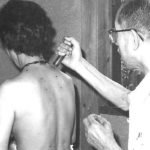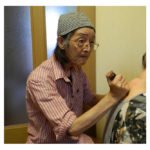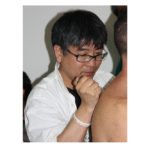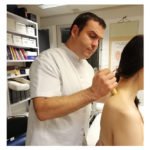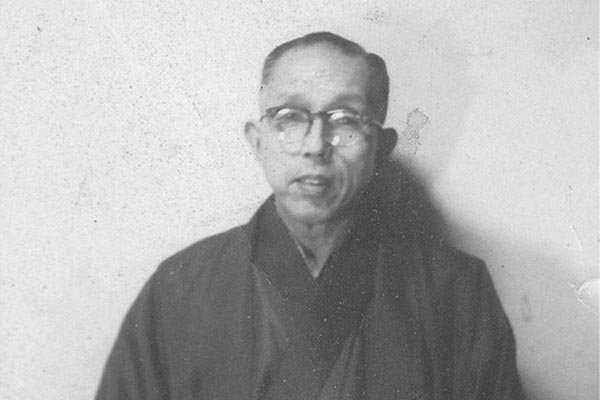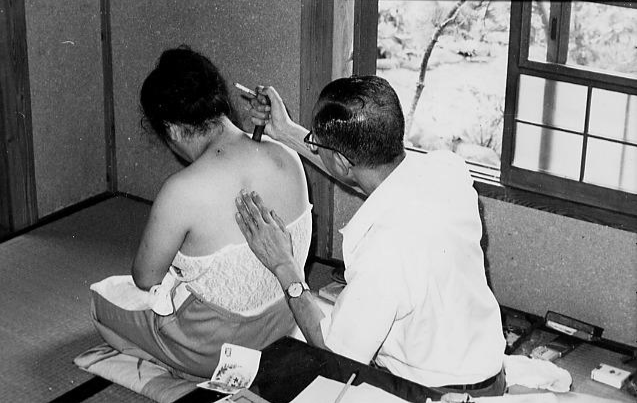Your cart is currently empty!
Moxibustion for Emotional and Stress Disorders in the COVID-19 Era – Free Recorded Webinar
Presented by Felip Caudet
1.5 Hour Recorded Webinar- 1.5 CPD Points*
*CPD Certificate is provided at the completion of the mandatory Online CPD Quiz that is provided at the end of the recorded webinar.
Online: Recorded Webinar- hosted in Sydney, Australia and broadcast from Barcelona, Spain
CPD approved/pre-approved by AACMA | Acupuncture NZ | NZASA
AU$ 0.00 (Free Access)
Payment Options:
Secure Online Credit Card Payment via Stripe: Select “Pay by Credit Card” at checkout | Instant Access to Online Courses available via this payment method.
Bank Transfer: Select “Direct Bank Transfer” at checkout. | Access to Online Courses is granted only after the funds are cleared.
If you registered for complimentary access to an online program, it will be enabled for access instantly after you checkout.
- Introduction
- About the Presenter
- A Line of Transmission
- Seminar Attendance Details
- CPD Points
- Presenter's Media
- Seating Information
“An excellent online learning opportunity for those wishing to apply some simple yet powerful Japanese moxibustion techniques to their practice, to assist patients with emotional and stress disorders”
Peter Scarselletti
Founder/Director
Qiology
The human being is constantly exposed to stimuli that must be processed.
The level of the emotional impact of the stimuli can affect all the functions of the system, as it collapses the circulation of Qi, causing stagnation.
Out of all the emotions, fear can increase the protective functions of the Autonomic Nervous System (ANS).
Due to the current global situation linked to the COVID19 pandemic, symptoms related to the most fragile aspects of health are present for many at this time, such as sleep disturbances, discouragement, emotional disturbances, lack of concentration, and more.
Moxibustion can be an excellent tool in such cases, thanks to its effects on the circulation of the Qi & Blood, and its immunological activity.
In this recorded webinar, a variety of different moxibustion strategies were demonstrated/taught to assist practitioners to have the correct tools to address disharmony in their clients.
Covered in this recorded webinar:
- Moxibustion and the Autonomic Nervous System (ANS)
- Qi-Blood Stagnation
- Moxibustion techniques for the surface and for depth
- Isaburo Fukaya Sensei’s “Emotional” treatment
- Large triangles for stress (Triangle Moxa Techniques)
- Moxa and ‘Blood’- Immunology
Please note that we have a comprehensive online Japanese Moxibustion Foundations program by this presenter available. Please see the link below to learn more/register:
Felip R. Caudet Piñana
Felip has been in practice as a physiotherapist and acupuncturist since 1999, and specialises in Japanese moxibustion. He studied with Tetsuya Fukushima, the highest representative of the Fukaya style of Moxibustion until 2022, and Hideo Shinma (son of Fukaya Sensei). In the last years, Felip was recognised as the best student of Fukushima sensei by the master himself. Felip was then considered in the line of transmission of the Fukaya Style of Moxibustion (a renowned Japanese moxibustion style recognised for its powerful and rapidly effective results in treating the root cause of acute and chronic illnesses). This is also due to Felip’s developments and contributions to the style. For years, he has been teaching and spreading Fukayakyu around the world with a deep respect for his masters.

Felip is also the developer of Kinseikyu, a Structural/Postural Balancing Moxibustion method.
Felip has published several books on Japanese moxibustion (some translated to other languages), and articles in specialised journals such as “North American Journal of Oriental Medicine” and “Osaka Journal of Clinical Acupuncture and Moxibustion.” (please see the following tabs for links to articles)
Currently, he combines his teaching activity as an international lecturer (Japan, Brazil, Germany, UK, France, Italy, Portugal, Spain – and now Australia!) with a very busy clinical practice in Tarragona (Spain).
Felip’s passion for moxibustion and his skills can be observed instantly during his classes. His open and giving teaching style and commitment to raising the standard of moxibustion for the profession has made him a sought after presenter across the globe. It’s with great enthusiasm that we bring this unique online training to you.
As is required by National Law, we disclose that Felip Caudet is not a registered health professional within Australia

The Line of Transmission in the Fukaya Style of Moxibustion
Isaburo Fukaya Sensei was a very famous moxibustion master in the 20th Century in Japan. Throughout his career, as a teacher he had many followers and students due to his great pedagogical skills and his extensive clinical experience.
The late Irie Seiji Sensei was recognised as Fukaya Sensei’s best student. To him, we owe the publication of the work ‘Fukayakyu’ that served to name the style and to spread Fukaya Sensei’s knowledge. Also his continuation in the teaching after Fukaya’s passing was very important. In this work, Irie Sensei was supported by Fukaya’s son, Hideo Shinma. Shinma Sensei helped Irie Sensei to maintain the heritage by publishing, reissuing and disseminating his father’s work over the years.
Later appeared the figure of Tetsuya Fukushima. He studied with Irie Sensei and was considered during his years as the highest representative of the style in Japan. Fukushima Sensei optimised the practice, respecting the rules of the style and simplified it without losing effectiveness. Fukushima Sensei passed away in 2022.
Felip Caudet, being a westerner, is an exceptional case. He was accepted by Fukushima Sensei as ‘oshiego’ (student), and in the following years he was recognised in the line of transmission of the Fukaya Style of Moxibustion, for his contributions in the understanding of the style, and the development of aspects related to the search of points such as the Triangle Theory. He is renowned for teaching Fukayakyu internationally.
In a number of Oriental countries, Japan included, it is considered a sign of disrespect to teach a style without the permission of the master. It’s for this reason that we thank you for respecting Fukaya Sensei’s tradition by choosing to study with a teacher from the line of transmission or an authorised teacher.
“Teaching in a line of transmission of a moxibustion style can’t be out of the back of a book- it’s a highly developed skill over time. It comes from years of dedication and hundreds, or even thousands of hours under Masters of the Style, as well as thousands of hours of clinical practice and experience, that is then shared with students.”
Peter Scarselletti
Founder/Director
Qiology
Isaburo Fukaya Sensei (Tokyo, 1900-1974)
Master Fukaya is recognised as a Master of Moxibustion in the Showa period. He was restless, prolific, and possessed great intellectual capacity for reflection and study. Before the outbreak of WWII (Fukaya was in his late 30s) he had already written several books about pedagogy and study. When studying law at Nihon Daigaku Hougaku in Tokyo he fell ill with tuberculosis. He found the solution to his illness in moxibustion. His recovery was an intense and powerful experience. This led him to study, and later develop deeply, the art and practice of moxibustion.
Isaburo Fukaya, formed as a moxibustionist, built his style through reading and reviewing classical texts [some famous ones such as Meika kyûsen (名家灸選) and some not so famous such as Kôtei Meido Kyu Kei (黄帝明堂灸経)], and through the observation of other practitioners as well as through very extensive and thorough clinical experience.
He visited many temples (traditional moxa hotbeds) and practitioners. He saw that although the moxa being practiced was effective it was also very painful. The cones were large. A very famous proponent of this was Kobonokyu in Asakusa (Tokyo) with cones of the size of a plum (ume). In order to receive the benefits of moxa, the patients had to endure very painful treatments, and it was something that he sought to remedy. He developed his famous bamboo tube (takezutsu) in order to solve this situation.
Fukaya was also inspired, by a classical master called Goto Konzan and some of his ideas, such as the the moxa point forming due to stagnation of the Qi and Blood, and the value of moxibustion as therapy.
Fukaya published several books, such as Kyu ni yoru chiryou ho (1963), Meikyuketsu no kennkyu (1963), Okyu de byouki wo naoshita hanashi (6 volumes from 1966 to 1972), Meikakyûsen siakugi (1973), and his version of Kôtei Meido Kyu Kei (1973), as well as a monthly magazine Shinkyu Zatsushi Chiryou devoted to acupuncture and moxibustion (223 issues published from 1955 to 1964). After the death of the master, other books of Fukaya were published by his son, Hideo Shinma.
Fukaya Sensei always thought that moxibustion should be spread across the globe, as it could be very beneficial to mankind. He made great efforts to carefully record treatment sessions, to record treatment findings (extra points with specific actions) and to review published and classical works on moxibustion.
It is indeed a rich legacy that has been left to us by Isaburo Fukaya Sensei, and the line of transmission continues the teachings to benefit the highly effective and correct practice of Fukaya Style moxibustion around the world.
“Moxibustion doesn’t work, you make it work.”
– Isaburo Fukaya Sensei
Moxibustion for Emotional and Stress Disorders in the COVID-19 Era – Recorded Webinar
Presented by: Felip Caudet
Recorded on Sunday, 06th December 2020
Hosted in Sydney, Australia and broadcast from Barcelona, Spain
What do I need to know about Online attendance?
- A recorded webinar access email will be sent to you automatically upon your registration, with the course access instructions. Please check your junk email folder if you have not received this email, after your registration.
- There are course notes downloads included in this course and a quiz. They are all contained within your course modules. After completion of the quiz, our system will generate you a downloadable Formal CPD certificate with your name on it.
Each seminar or online course page displays CPD points applicable.
CPD points are approved/pre-approved by AACMA | Acupuncture NZ | NZASA
Whilst we are pre-approved CPD provider for NZASA, we cannot guarantee that ALL of our content will align with the NZASA CPD Categories. It is advisable that you seek guidance from NZASA, if you are unsure.
Various North American Journal of Oriental Medicine (NAJOM) Articles on Moxibustion
authored by Felip Caudet
(Please click links below to open in a separate tab to read/download)
Basic concepts on one of the most famous Japanese moxibustion styles, brought to us by Isaburo Fukaya Sensei (1900-1974). The secrets of understanding Fukayakyu are understood by analysing the authentic tools of Fukaya Sensei, and following the essential principles of Fukayakyu left to us by Fukaya Sensei. This information was recorded by Fukaya’s best direct student(in the line of transmission), Irie Seiji Sensei.
Body posture can be balanced with a combination of moxibustion techniques. Kinseikyu is a therapy based on postural principles and moxibustion. The main objectives are to restore health, improve functionality of the body as a whole, and return the posture of the body to a balanced state.
Correctly finding moxa points on the body is the secret to performing successful and clinically effective moxibustion treatments. This article elaborates on many concepts on how and where on the body to find effective moxa points for direct moxibustion.
“Moxibustion doesn’t work, you make it work. Use special points to draw out the effect.”- Isaburo Fukaya Sensei
One of the methods used for point location in clinic by Isaburo Fukaya (1900-1974) and mentioned in his texts, was Jôsetsu-hô (じょうせつほう) or the “Bent String Method.” Like following the steps on a treasure map, this consists of taking measurements with a piece of string on one part of the body and applying them on other parts of the body, to find the hidden moxibustion point(s) at the end of the string.
“Moxibustion doesn’t work, you make it work. Use special points to draw out the effect.”- Isaburo Fukaya Sensei
Fascia and Fukaya: Correlating traditional moxibustion with modern ideas.
This fascinating article goes deep into understanding fascia and how its patterns of harmony and disharmony present in the body, in a triangular pattern. Understanding this fascinating diagnostic finding that presents itself clinically can assist us to find dysfunction in areas of the body, and their relationship to other areas in proximity to the problem area (all determined through palpation), which all affect the presenting condition. After finding the most effective points pertinent to the disharmony based on this theory, we can then influence the particular condition with the correct application of moxibustion to have extremely effective clinical results.
………..


